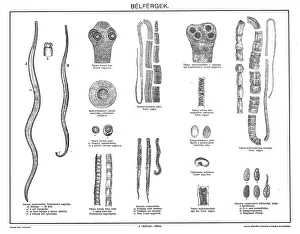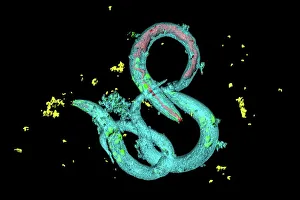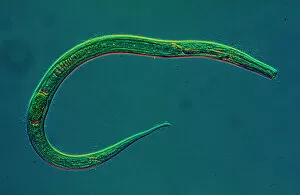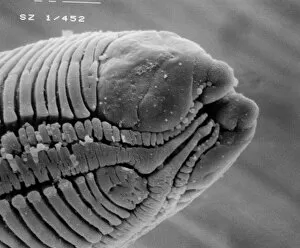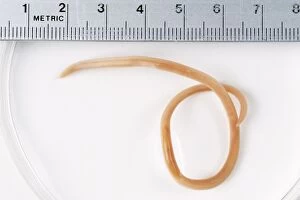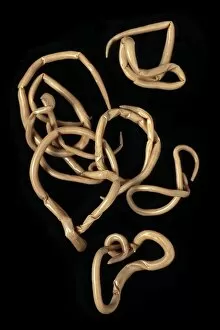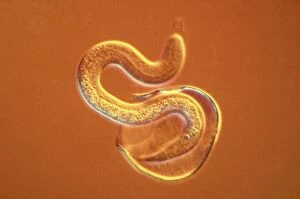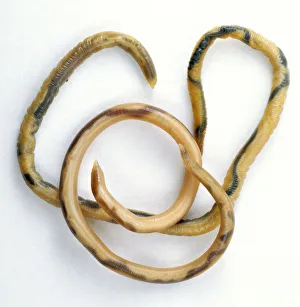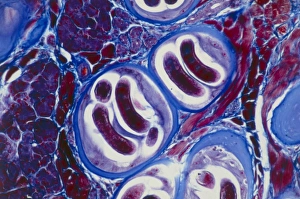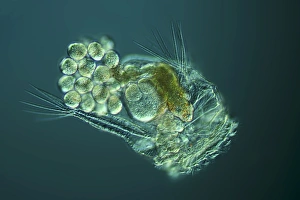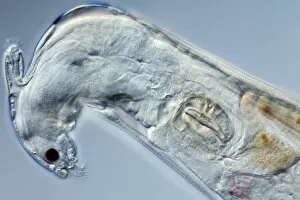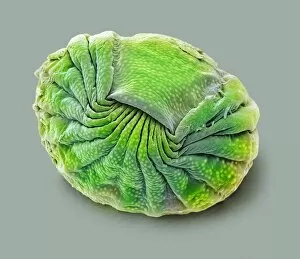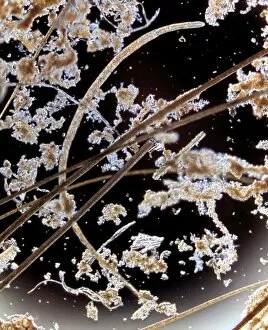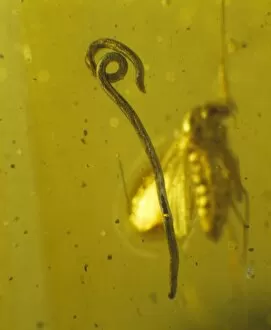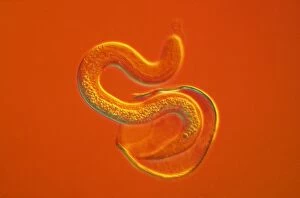Roundworm Collection
Roundworms, also known as gastrointestinal nematodes or nematode worms, are fascinating creatures that inhabit various environments
All Professionally Made to Order for Quick Shipping
Roundworms, also known as gastrointestinal nematodes or nematode worms, are fascinating creatures that inhabit various environments. One of the most well-known species is C. Elegans, which has been extensively studied in scientific research due to its simple anatomy and genetic makeup. In light micrographs such as Picture No. 11014628 and Picture No. 10744403, they can be observed with their slender bodies and tapered ends. These microscopic images provide a glimpse into the intricate details of these organisms' structures. Ascaris lumbricoides, commonly referred to as human roundworm, is another significant member of this group. This parasite infects humans and causes diseases by residing in the intestines. Biomedical illustrations like Cross section biomedical illustration of anatomy of a Roundworm (Nematodes) showcase the internal anatomy of these parasites. Picture No. 11675632 and Picture No. 11675614 offer captivating visuals depicting different aspects of roundworms' lives under the microscope. The former image displays an up-close view of hookworm, showcasing its unique features and adaptations for survival. Microscopic views like these allow scientists to study their morphology, behavior, and interactions with other organisms more closely. Roundworms play crucial roles in ecosystems as decomposers or predators in soil habitats while some cause diseases in animals including humans through ingestion or contact with contaminated food or water sources. Understanding the biology and life cycle of roundworms is essential for developing effective treatments against parasitic infections they cause in both humans and animals alike.

